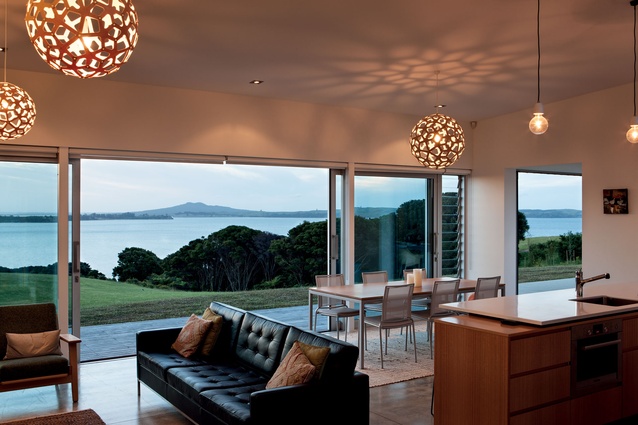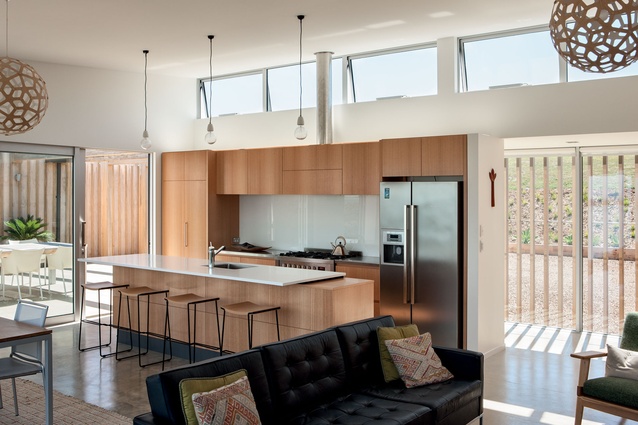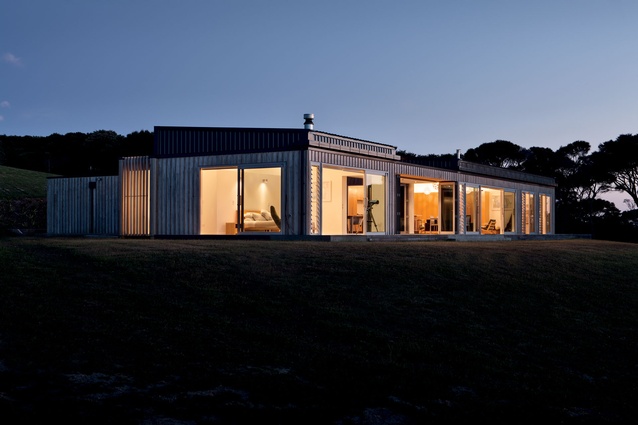Houses revisited: Waiheke house
Island life — designed as a retreat, this home nurtures the soul, first published in 2014.
There wouldn’t be too many places in the world where a 1.5km bike ride and 35-minute ferry trip are sufficient to put enough distance between a work-a-day life and total rest and relaxation. For the owners of this holiday house on Auckland’s Waiheke Island, however, that scenario is a reality.
Designed by architect John Ingham of Archoffice, the property is a foil to the owners’ working lives. “The clients refer to it as their retreat and as such were very clear about how the spaces needed to impart a sense of nurturing — not only to the occupants but also in relation to the site and the environment.”
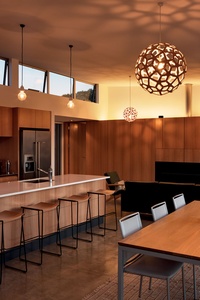
The response is a structure that in form and materiality draws much from its surroundings. A weathered board and batten-style timber exterior is augmented by an interior rich in timber accents and echoes the trunks and branches of the stands of kanuka that fringe the site.
As well as this material connection, the form of the house, with its contoured planes and sloping roofline, has been designed to follow the undulating topography in which it sits.
“I was also very aware of creating a sense of arrival,” says Ingham. “While I wouldn’t describe the site as being isolated, it is somewhat removed from the established residential areas, giving it a secluded feel. The approach to the property is via an elevated roadway, so to reinforce the sense of solitude and privacy I extended the batten element across the glazing along the eastern façade; effectively creating the illusion of a solid wall that recedes to give a glimpse of the interior.”
Once inside, the western façade is almost entirely transparent, with extensive glazing in every room serving to draw attention to the view, as well as having the added benefit of providing solar gain. Similarly, the concrete slab acts as a heat sink. Clerestory windows on the eastern façade admit morning light and also provide passive ventilation.
An important factor in the design was to provide separation between the master suite and the rest of the house. By ‘removing’ part of the structure and shifting it perpendicularly on the site, Ingham created a detached garage. The resulting void is now a courtyard space, which provides sheltered outdoor entertaining. A glazed gallery links the living area to the master suite. Bifolding doors mean the gallery can be fully opened to allow a seamless transition from the courtyard to the property.
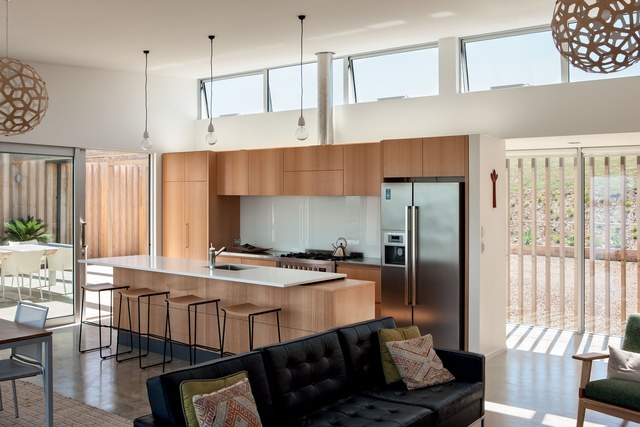
“The resulting spaces provide the increased level of privacy the owners were after and allow for a variety of outdoor spaces without the built environment encroaching any more than was necessary upon the landscape,” says Ingham.
While the finished result is the perfect response to the client brief and the constraints of the site, the process was not always simple, particularly in terms of logistics.
“The original concept called for precast concrete, however, transportation from Auckland would have proved too difficult so it was decided to go with a more conventional onsite construction method. The contractor, too, who is Auckland based, had ongoing trouble synchronising sub-contractors with ferry timetables.”
“However, all things considered, the outcome has put paid to any inconveniences encountered and is one all parties can be proud of.”
Click here to see more Houses Revisited. And sign up to our email newsletters to receive Houses Revisited straight to your inbox.
Note: These are stories from our archives and, since the time of writing, some details may have changed including names, personnel of specific firms, registration status, etc.


